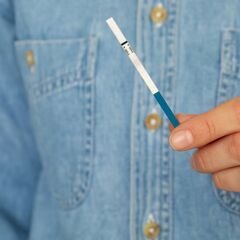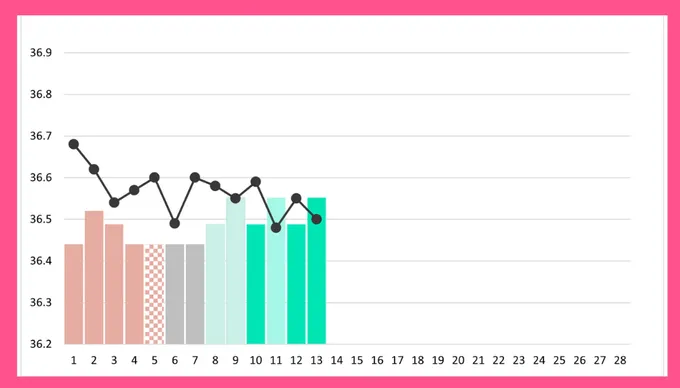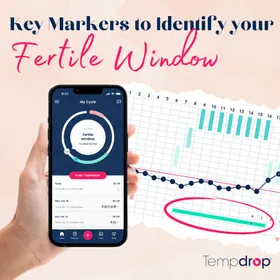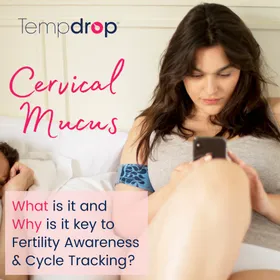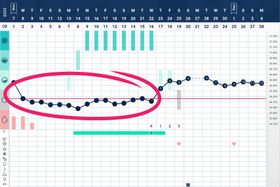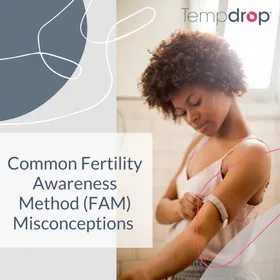Luteinizing Hormone (LH) Strips & Ovulation Predictor Kits (OPKs): Can they really help me succeed in my intentions?
Published February 5, 2025.

Luteinizing hormone (LH) is one of your main fertility hormones. As ovulation approaches and estrogen reaches its peak, LH facilitates the release of the egg. LH tests detect the rise in luteinizing hormone 24-36 hours prior to ovulation. Knowing when you ovulate is important if you are trying to conceive or trying to avoid pregnancy. This is because not everyone ovulates on day 14, and tracking your own ovulation will help you reach your fertility goals. LH tests are one way of helping to identify impending ovulation and can offer another layer of insight into your fertile window, but there are a few important things to know.
What are LH tests?
LH tests are urine hormone tests that look similar to a pregnancy test. Purchasing a large quantity is generally affordable, and they can be found either online or at your drugstore. Ovulation predictor kits (OPKs) are LH tests that do the interpreting of the test for you. However, OPKs are more expensive, and basic LH tests are quite simple to interpret once you understand them. I don’t think that OPKs are necessary in most cases.
How do you use them?
When you begin noticing a change in cervical mucus sensation or observation after menstruation, begin testing daily. The best time to test is once per day between 12pm and 8pm. As you get closer to a positive test, you may want to test twice a day to avoid missing the LH surge. It might be helpful to designate a small cup to dip your urine test into.
Basic LH tests will have a control line and a test line. As you approach your LH surge, the test line gets darker, eventually matching (or surpassing) in darkness to the control line. You have a positive when the test line and control line match.
When to use them?
No matter what your family planning intentions are, I don’t recommend using LH tests alone to identify your fertile window because they are not a definitive ovulation sign. Meaning, you can ovulate and miss your LH surge, or you can have an LH surge and fail to ovulate.
LH is only one marker of ovulation and is more effective when you pair it with cervical mucus and/or other signs. The most fertile day of mucus before it switches to something drier is called peak day. Peak day is an indicator of ovulation, and gives you fertility information in real time. Cervical mucus keeps sperm alive long enough to reach the egg, and if you’re trying to conceive you will want to time intercourse for your most fertile days of mucus. If you only rely on LH tests to identify ovulation, you may miss your fertile days!
Tracking your cervical mucus is not hard, and it will give you the most helpful and accurate information for all family planning intentions.
One important thing to note is LH tests may be more helpful for timing intercourse to conceive than basal body temperature (BBT). BBT generally only rises after ovulation has taken place, so while it will get a sense for your ovulation pattern and confirm ovulation has indeed taken place, by the time your temperature has risen it may already be too late for intercourse unless you time it for the morning of your first higher temperature.
LH tests when you are trying to conceive
If you are TTC, LH tests seem attractive because they are somewhat of an objective marker of ovulation. However, keep in mind you can miss your LH surge, or fail to ovulate following an LH surge. I find some women put too much weight on LH tests. If you are TTC, find the optimal days to time intercourse by learning a method of fertility awareness for a broader picture of your fertile window. Cervical mucus is key when it comes to conception and should be your primary ovulation marker if you are TTC.
To summarize, LH tests are a prospective marker of ovulation, meaning they let you know ovulation may happen in the next 24-36 hours. They’re a helpful additional marker, but putting all the weight on LH tests may mean that you miss your fertile window.I recommend learning a method of fertility awareness, and using LH tests as a backup to cervical mucus and basal body temperature.
